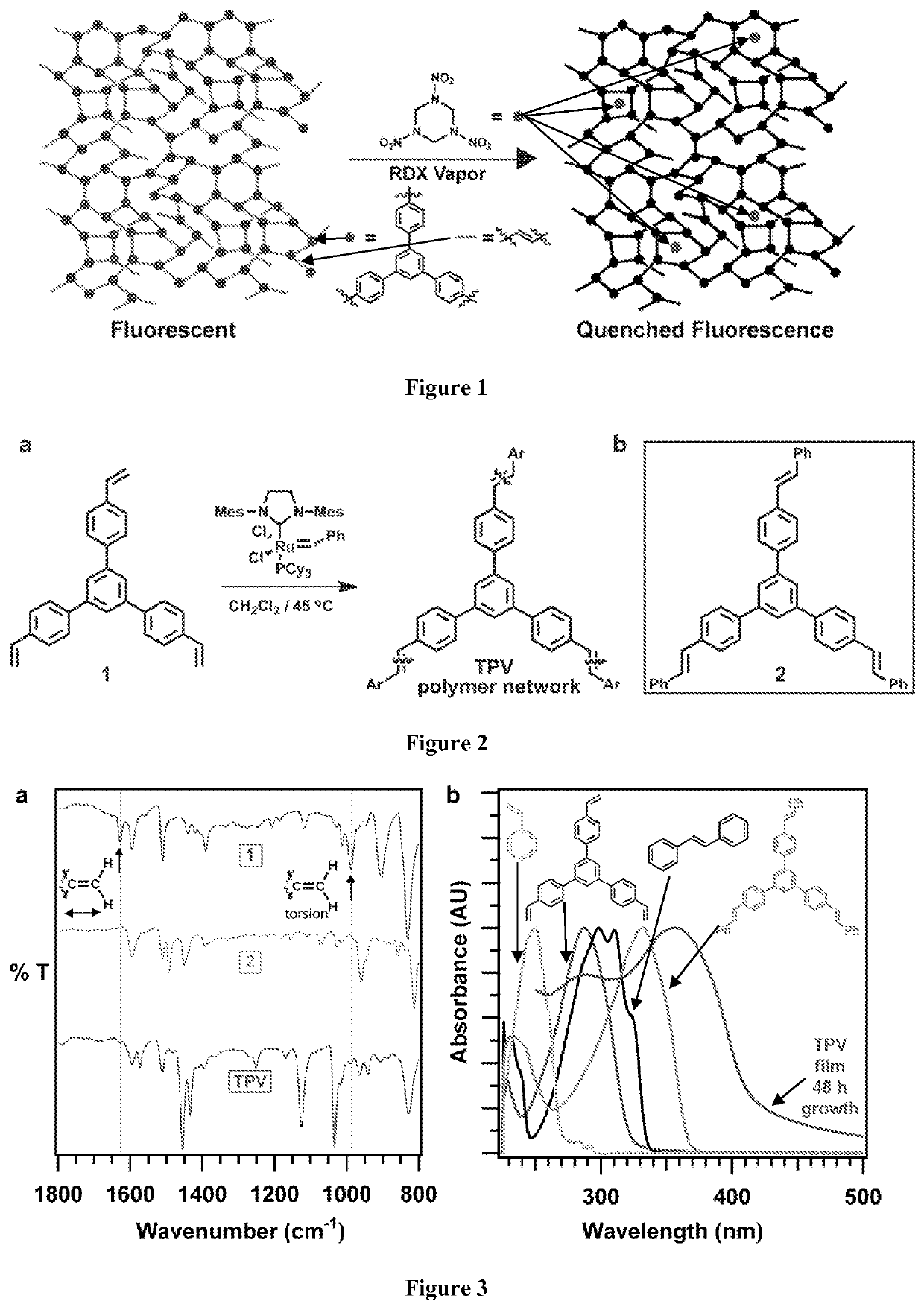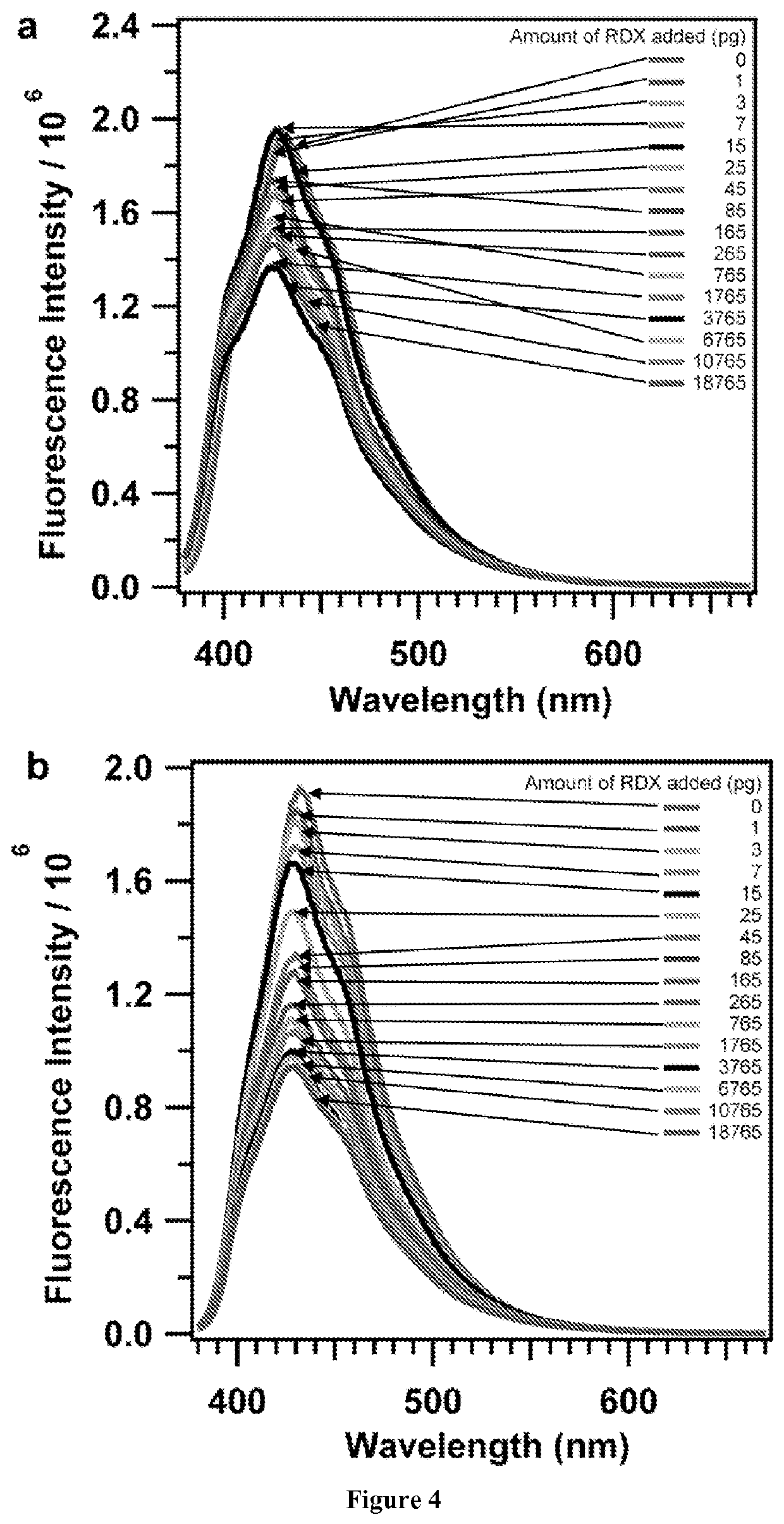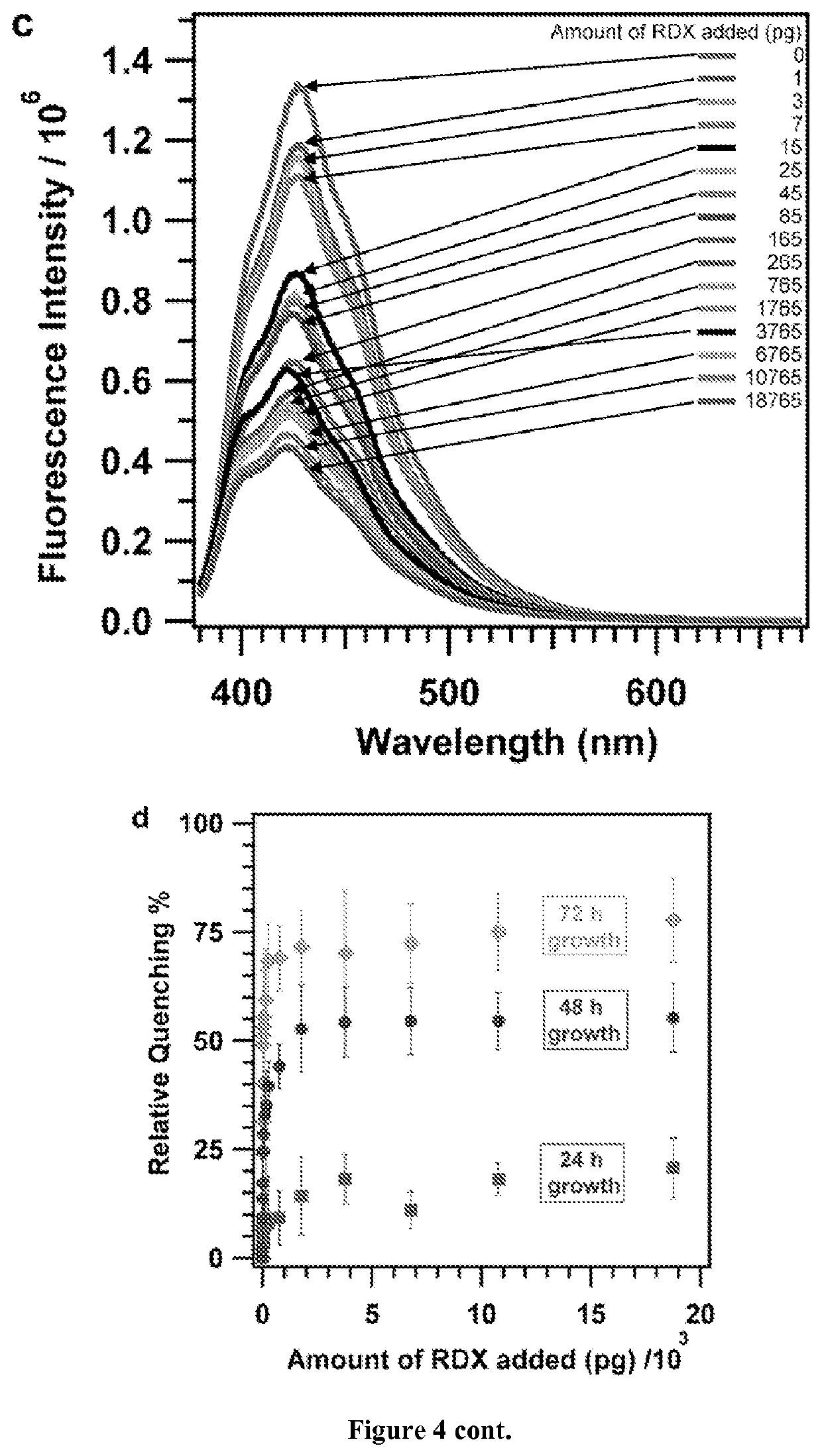Cross-linked polymer networks and methods of making and using same
a crosslinked polymer and polymer technology, applied in the field of conjugated crosslinked polymer networks, can solve the problems of low-volatile explosives such as pentaerythritol tetranitrate (petn), major security risks and safety hazards in the world, and the difficulty of detecting rdx vapor remains a major and difficult challeng
- Summary
- Abstract
- Description
- Claims
- Application Information
AI Technical Summary
Benefits of technology
Problems solved by technology
Method used
Image
Examples
example 1
[0128]In this example, a cross-linked phenylene vinylene-linked polymer network whose fluorescence is quenched by trace amounts of RDX introduced from solution or the vapor phase is demonstrated. Fluorescence quenching is reduced, but remains significant, when partially degraded RDX is employed, suggesting that the polymer responds to RDX itself. Pure solvents and outgassed vapors from lipstick or sunscreen do not quench polymer fluorescence.
[0129]1,3,5-trinitro-1,3,5-triazine (RDX) is a principal component of plastic explosives used in acts of terrorism and within improvised explosive devices (IEDs). Approaches to detect RDX compatible with remote, “stand-off” sampling that do not require preconcentration strategies, such as the swabs commonly employed in airports, will benefit military and civilian security. Such detection remains a significant challenge because RDX is 103 less volatile than 1,3,5-trinitrotoluene (TNT), corresponding to a parts-per-trillion vapor pressure under am...
example 2
[0166]In this example, formation of thin film of a cross-linked polymer network cross-linked to a substrate is demonstrated.
[0167]Tris(4-vinylphenyl)benzene (0.040 g, 0.104 mmoles), Grubbs 2nd generation catalyst (0.005 g, 0.006 mmoles) are added to a 15 mL pressure tube with a screw cap. Dry DCM (1.56 mL, 0.07 M) is then added to the tube. A fused SiO2 chip functionalized with allyltrimethoxysilane is gently dropped in to the reaction solution. The pressure tube is sealed with the screw cap and the tube is heated to 45° C. After time “t” the reaction is stopped and the tube is cooled down to room temperature. Then the pressure tube is opened and the fused SiO2 chip is removed from the reaction mixture. The chip is washed with DCM and the solution is sonicated for 15 seconds to remove any powders stuck on the film. The chip is air dried before further experiments.
example 3
[0168]In this example, formation of a cross-linked porphyrin network is demonstrated.
[0169]An alkene-linked porphyrin covalent organic framework (Porphyrin COF) was synthesized through an acyclic diene metathesis (ADMET) polymerization of a tetrafunctional porphyrin derivative (FIG. 61). Olefin metathesis was chosen for its high functional group tolerance, mild reaction conditions, benign stoichiometric byproducts (ethylene) and synthetically convenient monomers. The porphyrin was polymerized under solvothermal conditions in CH2Cl2 at 45° C. in the presence of 6 mol % of the Grubbs 2nd Generation olefin metathesis catalyst, which provided the conjugated porphyrin network (FIG. 1) as an insoluble microcrystalline powder. The porphyrin COF exhibited x-ray diffraction peaks consistent with a square, two-dimensional layered network (FIG. 62). The porphyrin network powders exhibited FT-IR spectra consistent with the formation of a network linked by stilbene moieties, whereas the porphyri...
PUM
| Property | Measurement | Unit |
|---|---|---|
| thickness | aaaaa | aaaaa |
| thickness | aaaaa | aaaaa |
| wavelengths | aaaaa | aaaaa |
Abstract
Description
Claims
Application Information
 Login to View More
Login to View More - R&D Engineer
- R&D Manager
- IP Professional
- Industry Leading Data Capabilities
- Powerful AI technology
- Patent DNA Extraction
Browse by: Latest US Patents, China's latest patents, Technical Efficacy Thesaurus, Application Domain, Technology Topic, Popular Technical Reports.
© 2024 PatSnap. All rights reserved.Legal|Privacy policy|Modern Slavery Act Transparency Statement|Sitemap|About US| Contact US: help@patsnap.com










